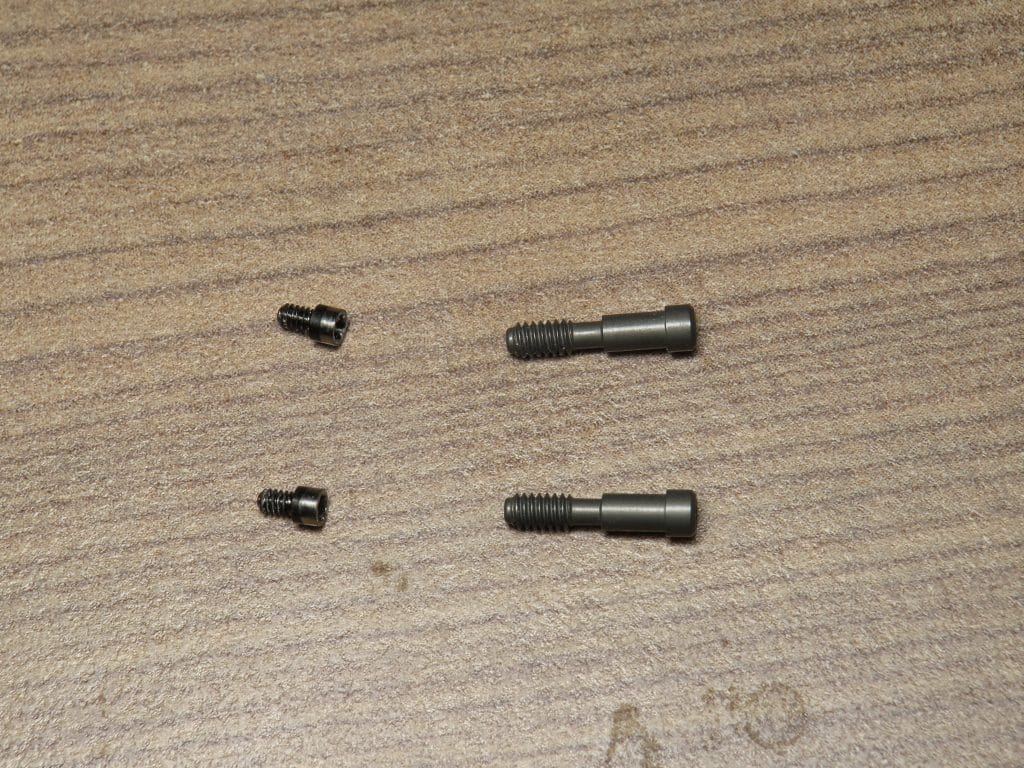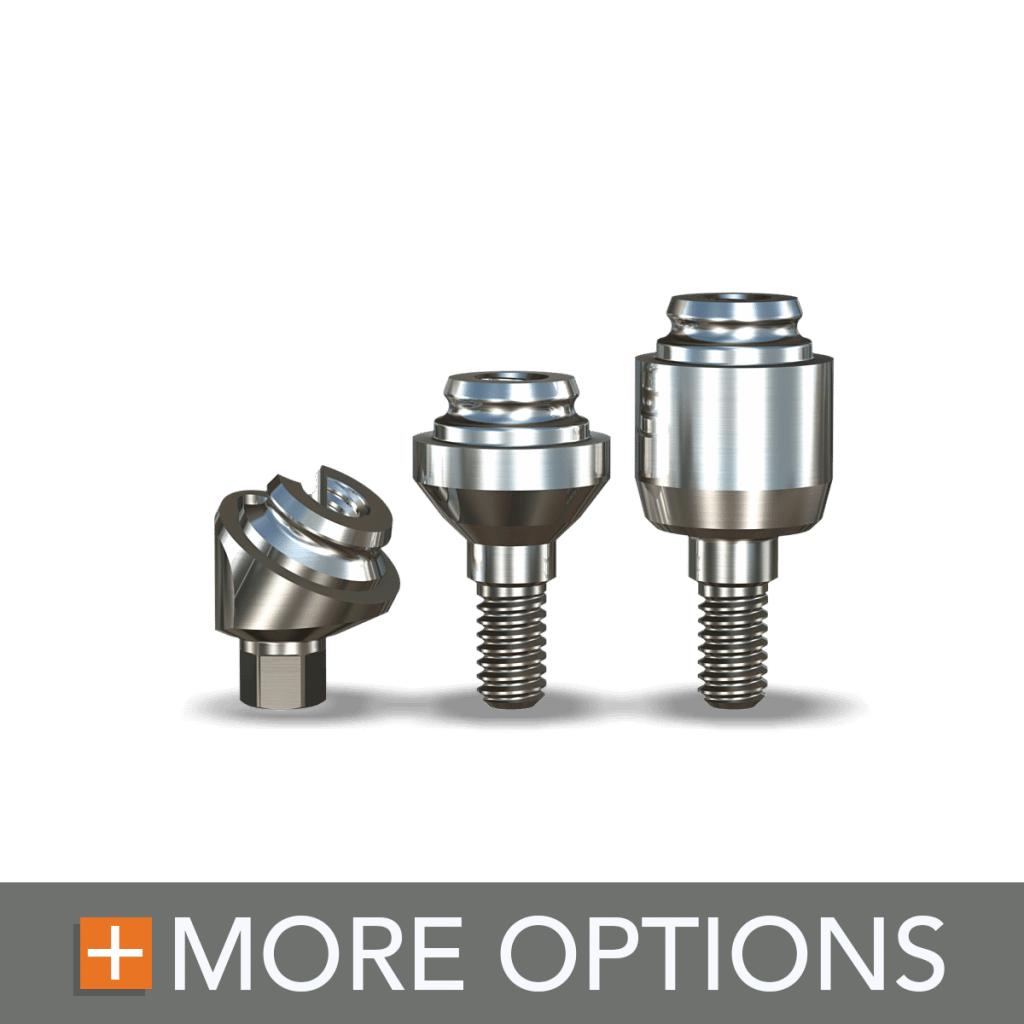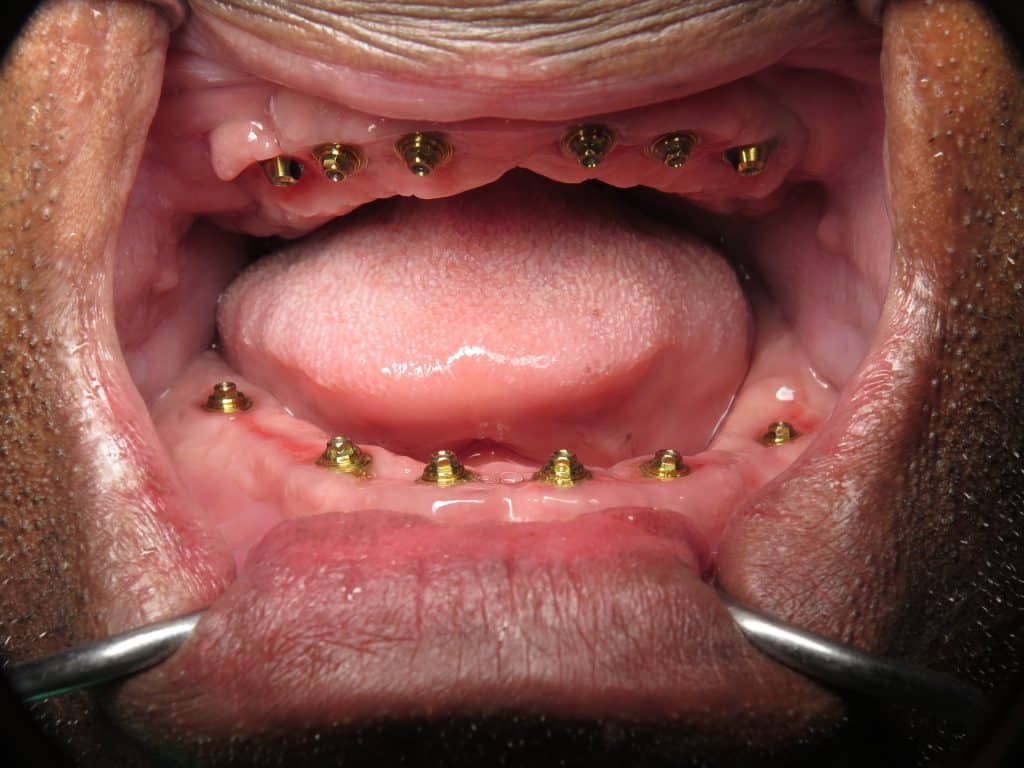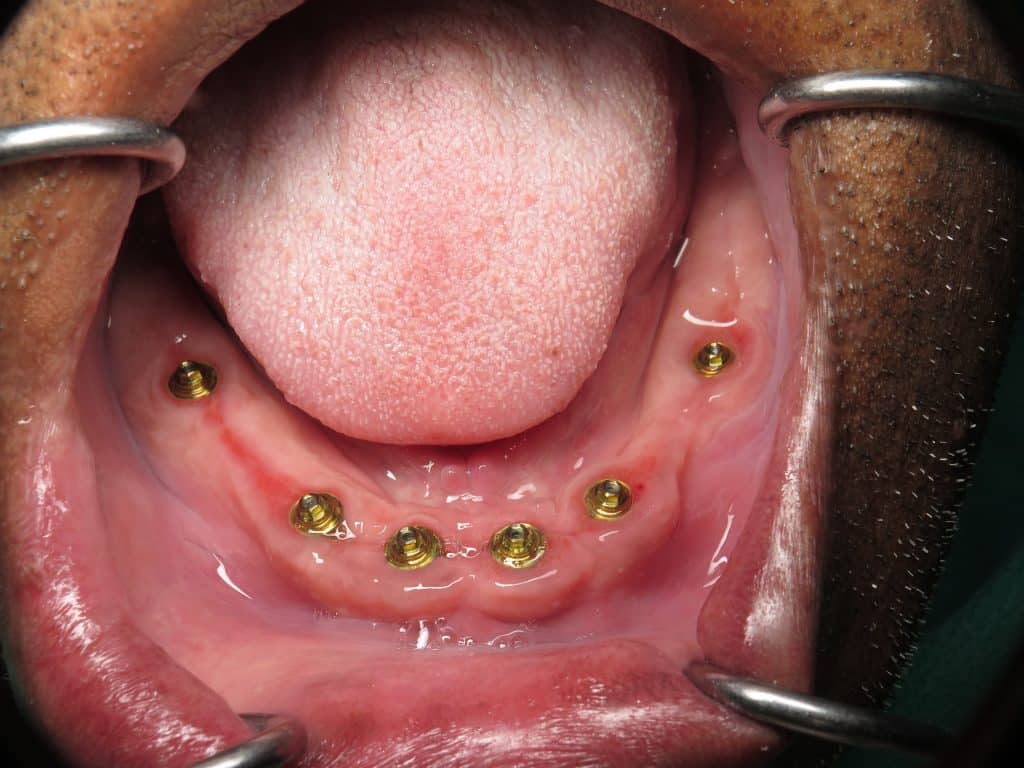A Special Kind of Abutment
Multi-unit abutments are a special kind of dental implant abutment. They are used when you have to connect multiple teeth implants together to make a bridge impression. They are most common for a full arch replacement, all on 4, all on “X” with or without zygomatic dental implants.
It is important to know they are not always required. They have some disadvantages and some advantages as well like anything else in life!

They come in a variety of sizes for different types of implants and they come in different angulations. Common angulations would be 0°, 17°, 30°, 45° and then there are some specialty 52.5° and 60° multiunit abutments.
Multi-Unit Disadvantage
The biggest disadvantage of this particular abutment is that the screw that holds your bridge on is quite tiny. You cannot tighten the screw down very much because it is so small. It is like the size of the screws that may hold your eyeglass frames together.


The multiunit abutment is shaped like cone. If one cone is in alignment with another cone a bridge can be made over it. this makes it so the bridge will not rock from side to side.
We call this passive fitting of the prosthetic bridge. THIS IS REALLY IMPORTANT.
That being said it takes specialized techniques with either regular impressions or trios digital impressions to make everything fit nicely. The screws are so small they only have just a few threads!
Advantages of Multi-Unit
The big advantages that they bring the edge of the bridge close to the surface which makes it easy for the dentist to work on you. They work great for pterygoid dental implants.
The big problem with these besides the small screws that may take up a lot of space in the bridge. There is less space from top to bottom which can make a Prettau zirconia dental implant Bridge weaker if not planned right.

The screws may need to be checked on a routine basis so sometimes these bridges require removal, re-tightening and replacement of the screws. If even one screw gets loose and can break which is quite the pain to remove and can lead to a broken bridge altogether…YIKES!
The other option is to make the bridge go directly to the top of the implant. This is not possible with all types of bridges and it is not possible with all types of implants. This requires a very high level of skill and accuracy to make the bridge without the help of multiunit abutments because the accuracy has to be dead on. Without the multiunit abutments a much larger screw can be used which is not likely to break or loosen
Sometimes I will mix and match multi unit abutments along with making the bridge go directly to the implant level.
Each case is very unique and specific and should be treated as such.

Sometimes the multiunit abutments can get in the way of having proper convex surface on a full arch bridge making cleaning very difficult
So basically the multiunit abutment is a angle changing abutment that acts as a spacer to go through the gums. Sometimes they are chrome in color or they can be colored. Either way there still manufactured in titanium and need to have a precision fit to the implant.
Do I Need This Abutment?
There is no right or wrong just differences in opinions and skill levels. If you do have multiunit abutments in your bridge be sure to check the screws so that they are not loose. You may not notice that all until one breaks.
There are also ways to correct angulations even on multiunit abutments. Sometimes their primary purpose is just to make sure the screw channels are behind your teeth biting surfaces and not sticking out through the front.
An alternative sometimes it is an angulated screw channel which is a topic for another article.
Ramsey A. Amin, D.D.S.
Diplomate of the American Board of Oral Implantology /Implant Dentistry
Fellow-American Academy of Implant Dentistry
Burbank, CA
818-846-3203

